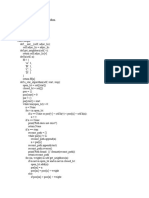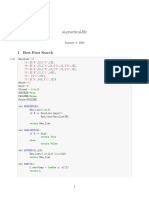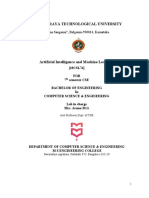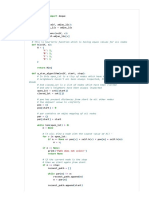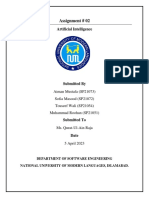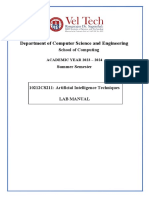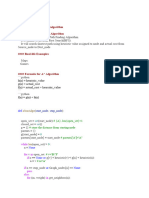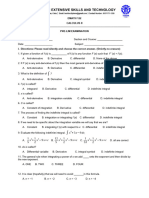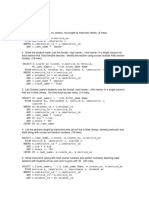0% found this document useful (0 votes)
43 views9 pagesAIML Lab Manual
The document describes an algorithm for learning logical rules from examples using the Candidate Elimination Algorithm. It loads data from a CSV file containing examples of weather conditions and whether it is suitable for playing. It initializes the specific and general hypotheses. It then iterates through each example, updating the hypotheses by eliminating inconsistent values. In the end, it prints the final specific and generalized hypotheses learned from the examples.
Uploaded by
AARUNI RAICopyright
© © All Rights Reserved
We take content rights seriously. If you suspect this is your content, claim it here.
Available Formats
Download as PDF, TXT or read online on Scribd
0% found this document useful (0 votes)
43 views9 pagesAIML Lab Manual
The document describes an algorithm for learning logical rules from examples using the Candidate Elimination Algorithm. It loads data from a CSV file containing examples of weather conditions and whether it is suitable for playing. It initializes the specific and general hypotheses. It then iterates through each example, updating the hypotheses by eliminating inconsistent values. In the end, it prints the final specific and generalized hypotheses learned from the examples.
Uploaded by
AARUNI RAICopyright
© © All Rights Reserved
We take content rights seriously. If you suspect this is your content, claim it here.
Available Formats
Download as PDF, TXT or read online on Scribd
/ 9



